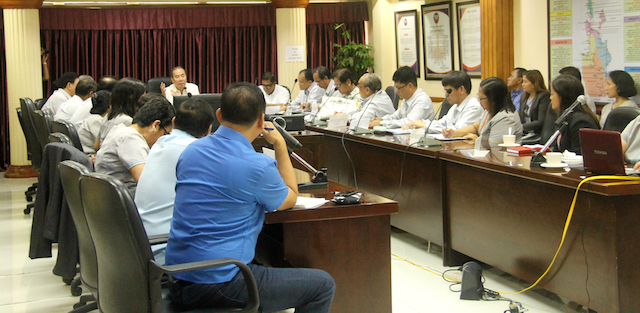
Department of Public Works and Highways’ most notable secretary, Rogelio L. Singson has this last policy instruction to recommend to management which is to impose ‘limit’ on annual funding for each project implemented by the Department to address underspending of budget. This was disclosed by the secretary during his recent visit to Caraga Region, his last before he bows out of the department come June 30, 2016.
The outgoing secretary has been recently doing his rounds nationwide, visiting each region to assess current status of infrastructure program to ensure a smooth transition of governance to department’s newly- appointed Secretary Mark Villar.
“I am ready for turn-over anytime now, but I’m just doing my rounds to make sure the next administration will not encounter major problems following my lead” he said.
On June 9, he had a stopover at DPWH-Caraga Regional Office, in Butuan City, where he held a two-hour meeting with the agency executives and officials to hear their concerns on project implementation as well as share insights on policy directions and program thrusts of the incoming new administration, which may affect the bureaucracy of the department.
Sec. Singson disclosed that “despite the department is given huge amount of budget, a notable percentage of it were not used for projects neither for services, which is the prevailing issue at this point – underspending of funds”.
Underspending pertains to percentage of funds allotted to the department for its expenditure that were unable to utilize within the given period.
According to him, the DPWH Central Office has recognized budget programming as the bottleneck of series of complications that eventually “results to underspending”.
“The management committee is meeting regularly nowadays with incoming Sec. Villar, and we have studied closely the necessary approaches to undertake to address this issue, of which one is to limit annual funding of projects with multi-million worth, such as bridges, to be based on capacity of contractors to accomplish certain percentage of projects”, he said.
He said this policy entails contractors to enter into Multi-year Obligational Authority.
“By that, it means the single contractor will assume implementation until the project is completed, but the annual funding will be based on how much they can accomplish for the current year the project is being implemented”, he added.
Another factor he identified that hinder the utilization of budget is the delays on accomplishment due to road right-of-way, inaccessible project locations, and protracted processing of documents.
He said, “These problems could’ve been mitigated, if not avoided, when they are worked out initially prior to the beginning of implementation of project itself”.
At this point, Sec. Singson recommended that by the following year, only projects that are ‘workable’ should be implemented, while the rest of the budget is utilized in the preparation of those that have anticipated difficulties.
Sec. Singson clarified that while imposition of the said ‘limits’ doesn’t entail low budget for the succeeding years – but only for a time being until workable conditions are met for projects to push through – thus fund utilization is efficient in this approach.
Being one of the departments with biggest budget allotted for infrastructures, DPWH expenditure is one way of the government’s investment to keep the monetary system rolling around.
